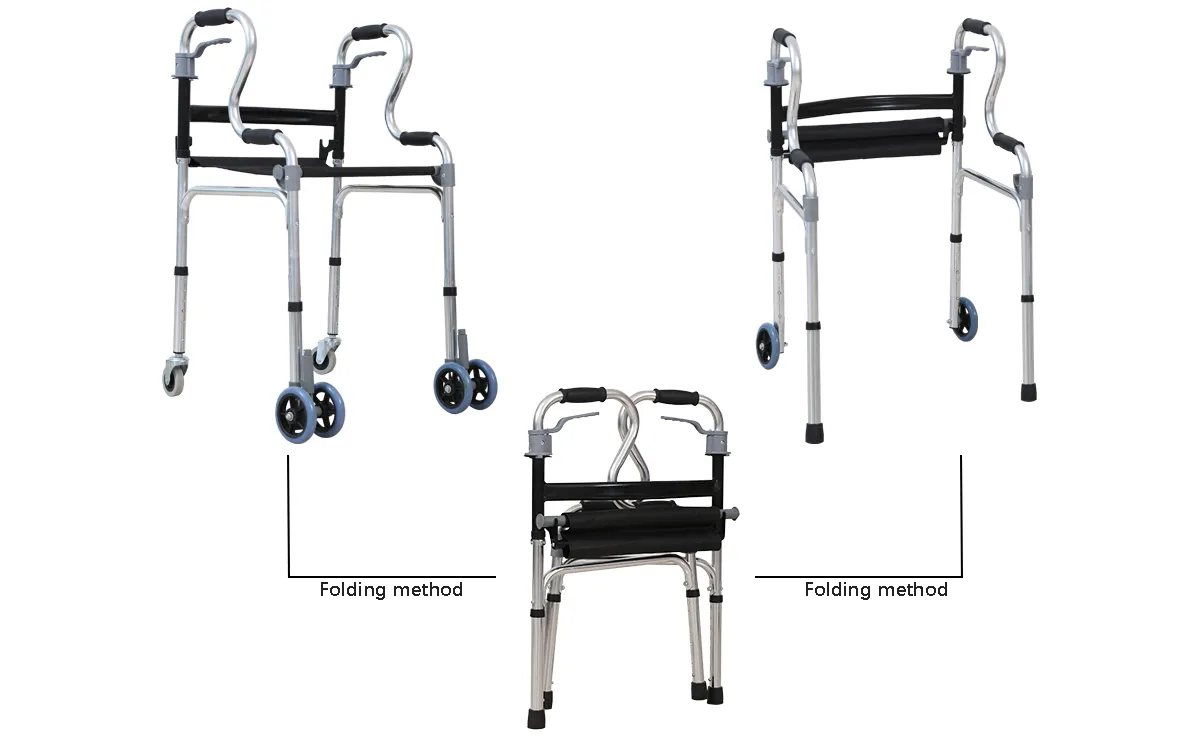Welcome to our websites!
crutches mobility aids
Understanding Crutches as Mobility Aids Enhancing Independence and Mobility
Crutches have long been a significant mobility aid for individuals experiencing temporary or permanent physical disabilities. They are designed to assist those who have difficulty walking due to injury, surgery, or medical conditions affecting their lower limbs. As essential tools for rehabilitation and mobility, crutches offer various benefits, enabling users to maintain a degree of independence while navigating their environment.
Types of Crutches
There are several types of crutches available on the market, each designed to cater to different needs
. The most common types include1. Axillary Crutches Also known as underarm crutches, these are the traditional style most people envision when thinking about crutches. They consist of a long shaft with a padded support that fits under the armpit and handles that the user holds onto. While they provide significant support and stability, they require proper usage to avoid discomfort or injury.
2. Forearm Crutches Also referred to as elbow crutches, these have cuffs that wrap around the forearms. This design allows for more freedom of movement in the hands while providing support from the forearm. They are often preferred by individuals requiring long-term mobility assistance since they can reduce the strain on the wrists.
3. Platform Crutches These are less common but serve a critical role for those with limited wrist or hand function. The design features a platform for the forearm to rest on, allowing users to transfer their weight through the arm instead of relying heavily on the grip.
Choosing the Right Crutches
Selecting the right type of crutch is crucial for effective rehabilitation and mobility. It involves several factors, including the user’s specific needs, the duration of use, and any underlying medical conditions. Consulting with a healthcare professional, such as a physical therapist, can help individuals make informed decisions about which crutches will best serve their lifestyle.
One of the key considerations is the proper fit. Crutches that are too tall or too short can lead to discomfort and increase the risk of falls. Users should stand straight while someone measures them for crutches, ensuring that the hand grips are aligned with the wrists when the arms hang down. Additionally, the top of the crutches should be positioned about one to two inches below the armpits.
crutches mobility aids

Techniques for Walking with Crutches
Learning how to use crutches correctly is essential for safety and mobility. Users typically adopt one of several walking techniques depending on their specific injuries or conditions. The most common methods include the “two-point” and “three-point” techniques.
- Two-Point Technique This involves moving one crutch and the opposite leg forward simultaneously, followed by the other crutch and leg. This method helps maintain balance and is often easier for those with stable leg strength.
- Three-Point Technique Used primarily by individuals who cannot bear weight on one leg, this technique involves moving both crutches forward first, followed by the uninjured leg. This method provides maximum support and is ideal for recovering from surgery or severe injuries.
Challenges and Considerations
Despite their efficacy, using crutches can present challenges. Users may experience discomfort in the hands, wrists, or underarms, particularly with extended use. It is advisable to take breaks, use padding, or explore ergonomic crutches designed to reduce strain.
Additionally, navigating various environments while using crutches can be daunting. Crutch users must be aware of their surroundings, especially in crowded or uneven spaces. Safety is paramount; thus, being cautious on stairs, ramps, and wet surfaces is crucial to avoid falls or injuries.
Conclusion
Crutches serve as vital mobility aids, empowering individuals to regain their independence after injury or illness. With the right type of crutch, proper fit, and usage techniques, individuals can enhance their mobility and confidence while navigating daily life. As technology advances, additional innovations in crutch design continue to improve the overall experience for users. Whether recovering from a simple sprain or adapting to a long-term mobility challenge, crutches remain an invaluable tool in promoting independence and mobility among individuals of all ages.
-
Transforming Healthcare with Hospital FurnitureNewsJun.24,2025
-
Rehabilitation EquipmentNewsJun.24,2025
-
Mobility and Independence with WheelchairsNewsJun.24,2025
-
Freedom of Mobility with Our Rollator WalkersNewsJun.24,2025
-
Comfort and Independence with Commode ChairsNewsJun.24,2025
-
Bathing Safety and Independence with Shower ChairsNewsJun.24,2025
-
Navigating the Wholesale Landscape of Electric Mobility Solutions: Key Considerations for Power Wheelchair DealersNewsJun.10,2025











